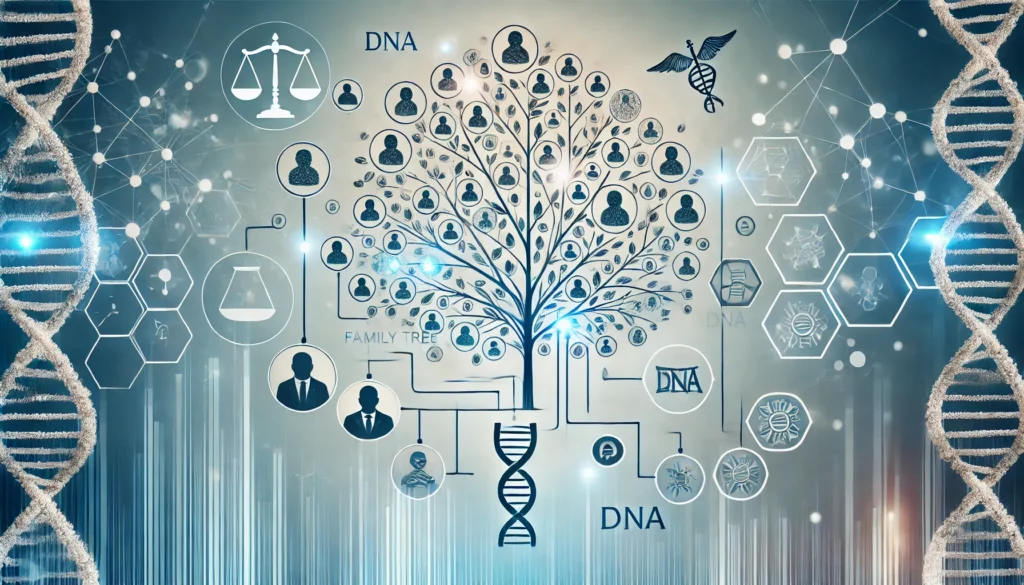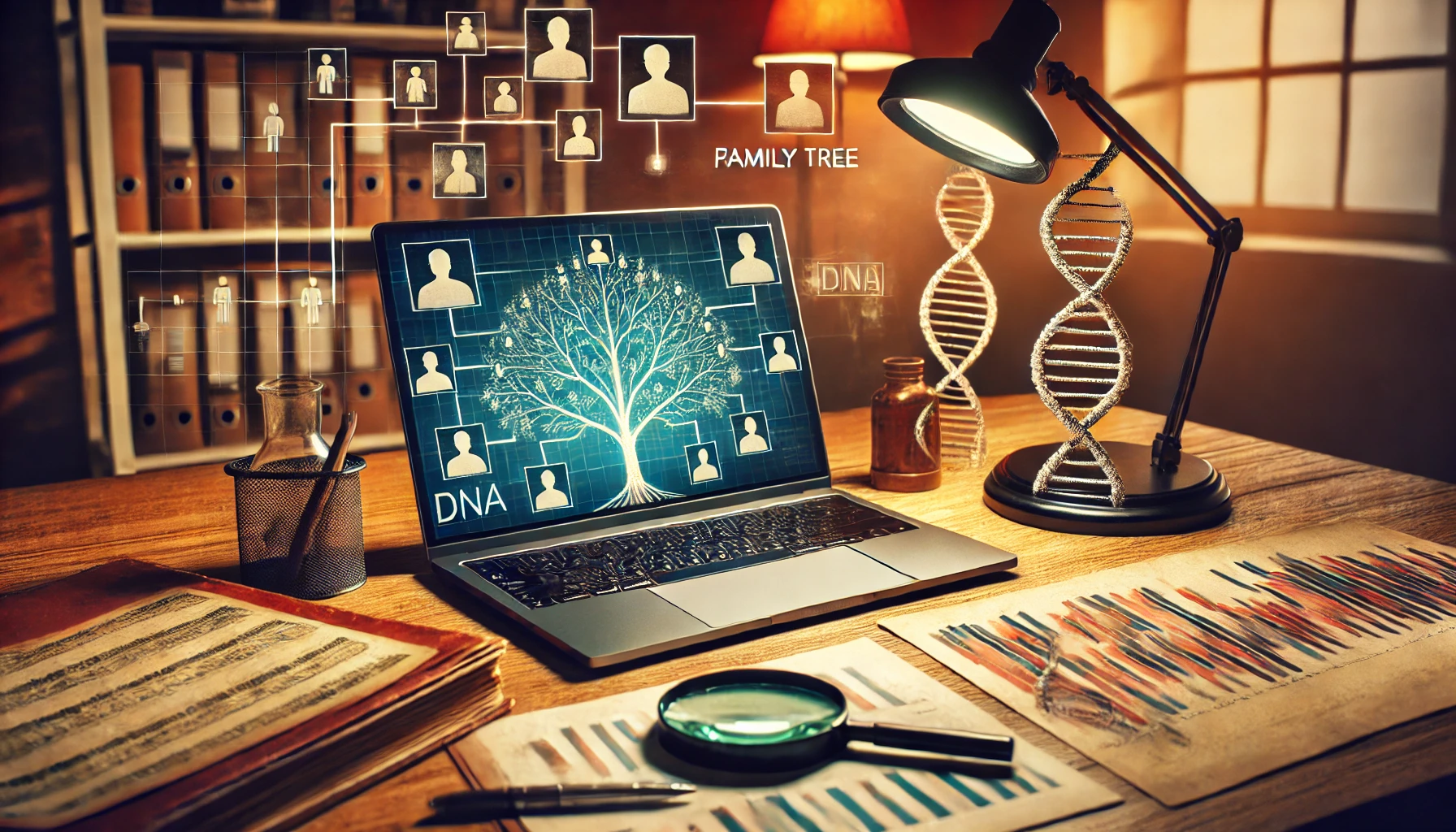The study of family trees, or genealogy, has long fascinated individuals seeking to uncover their heritage and cultural roots. Beyond personal curiosity, genealogy has emerged as a powerful tool in scientific research, particularly in criminology. By analyzing familial relationships and genetic data, researchers have begun to explore how family histories and inherited traits might influence criminal behavior. This article delves into the intersection of family tree studies and crime, examining its historical development, scientific methods, ethical challenges, and implications for the future.
The Role of Genealogy in Understanding Crime
Genealogy involves tracing an individual’s ancestry and familial connections. In criminology, family tree studies have been employed to:
- Identify Patterns of Criminal Behavior:
- By mapping familial relationships, researchers can detect recurring patterns of criminal activity within families. These patterns often reveal how environmental, social, and genetic factors converge.
- Investigate Genetic Predispositions:
- Family studies can identify genetic markers associated with tendencies toward aggression, impulsivity, or other traits linked to criminal behavior.
- Solve Cold Cases:
- Genealogical techniques, combined with DNA databases, have revolutionized criminal investigations, enabling law enforcement to solve cases that were previously deemed unsolvable.
Historical Context: Genealogy and Crime Studies
The connection between family studies and crime dates back to the 19th century. Notable examples include:
- The Juke Family Study (1877):
- Sociologist Richard Dugdale conducted one of the earliest studies linking family history to crime. He traced the lineage of a family known for its high incidence of criminality, concluding that both genetic and environmental factors contributed to their behavior.
- The Kallikak Family Study (1912):
- Conducted by psychologist Henry H. Goddard, this study purported to show a link between “hereditary feeblemindedness” and criminal behavior. Although later criticized for methodological flaws, it sparked interest in the role of heredity in crime.
- Contemporary Studies:
- Modern researchers have moved beyond simplistic interpretations, using sophisticated tools like genome-wide association studies (GWAS) to explore the complex interplay of genetics and environment.
Scientific Approaches to Genealogy and Crime
- Building Family Trees:
- Researchers construct family trees using historical records, birth certificates, and marriage documents. These trees provide a visual representation of familial relationships and inheritance patterns.
- Genetic Analysis:
- DNA testing plays a critical role in modern genealogy. By analyzing genetic samples, scientists can:
- Identify shared genetic markers among family members.
- Detect mutations or genetic anomalies linked to behavioral traits.
- DNA testing plays a critical role in modern genealogy. By analyzing genetic samples, scientists can:
- Database Integration:
- Public and private DNA databases, such as GEDmatch and 23andMe, allow researchers to cross-reference genetic data and establish familial connections. These databases have become invaluable in both academic research and law enforcement.
Case Studies: Solving Crimes Through Genealogy
- The Golden State Killer:
- In 2018, genealogical research led to the arrest of Joseph James DeAngelo, the infamous Golden State Killer. Investigators used DNA evidence from crime scenes and matched it to relatives listed in a public DNA database.
- The Bear Brook Murders:
- Genealogical techniques were instrumental in identifying victims and their killer decades after the crimes occurred, highlighting the power of combining family tree studies with advanced DNA analysis.
- Unsolved Cases:
- Ongoing efforts continue to use genealogical methods to crack cold cases, bringing justice to victims and their families.

Genetic Criminology: Insights and Controversies
- Nature vs. Nurture:
- While family tree studies can uncover genetic predispositions to certain behaviors, they also emphasize the critical role of environmental factors such as upbringing, education, and socioeconomic status.
- Genetic Markers and Crime:
- Researchers have identified specific genes, such as MAOA (the “warrior gene”), that may influence aggression and impulsivity. However, the presence of such genes does not guarantee criminal behavior; rather, they interact with environmental triggers.
- Ethical Concerns:
- The use of genetic information raises ethical questions about privacy, consent, and the potential for discrimination based on genetic predispositions.
Challenges in Linking Genealogy and Crime
- Privacy Issues:
- The use of public DNA databases for criminal investigations has sparked debates over privacy and consent. While these tools have solved crimes, they also raise concerns about the unintended use of personal genetic data.
- False Positives:
- Genetic data is not infallible. Misinterpretations or errors in genealogical analysis can lead to wrongful accusations or convictions.
- Environmental Complexity:
- Separating genetic influences from environmental factors remains a significant challenge, as most criminal behaviors arise from a combination of both.
Technological Advances in Genealogy and Crime Studies
- Artificial Intelligence (AI):
- AI algorithms can analyze vast genealogical datasets to identify patterns and connections that would be impossible for humans to discern.
- Advanced DNA Sequencing:
- Next-generation sequencing technologies enable detailed analysis of genetic material, providing insights into inherited traits and familial relationships.
- Integration with Forensic Science:
- Combining genealogical methods with traditional forensic techniques enhances the accuracy and efficiency of criminal investigations.
Ethical Implications and Future Directions
- Balancing Justice and Privacy:
- Striking a balance between solving crimes and respecting individual privacy is crucial. Policies must ensure that genetic data is used responsibly.
- Expanding Research:
- Future studies should focus on diverse populations to avoid biases and ensure findings are applicable across different demographics.
- Educational Initiatives:
- Educating the public about the benefits and limitations of genealogical research can foster understanding and acceptance of its role in criminology.
Conclusion
The intersection of family tree studies and crime offers a fascinating glimpse into the ways genealogy can illuminate the roots of criminal behavior. By combining traditional genealogical methods with cutting-edge genetic research, criminologists can uncover new insights into the interplay of heredity, environment, and behavior. However, these advancements must be tempered with ethical considerations to ensure that the pursuit of justice does not come at the expense of individual rights. As technology continues to evolve, the potential for family tree studies to transform our understanding of crime remains vast and promising.

